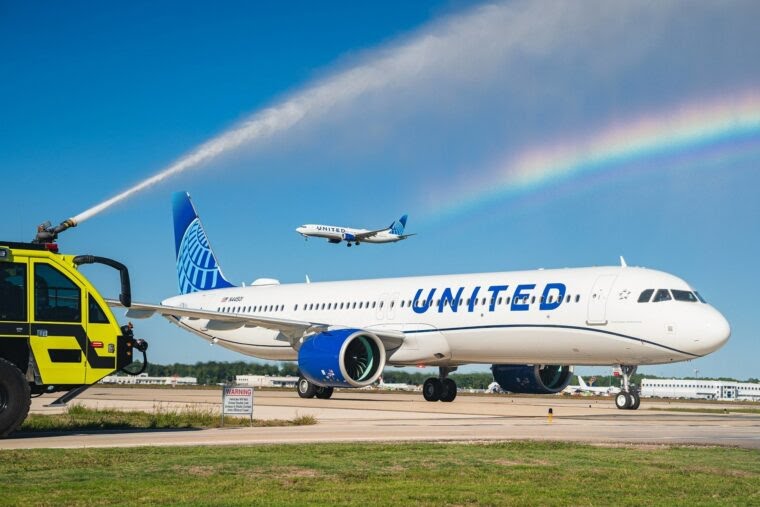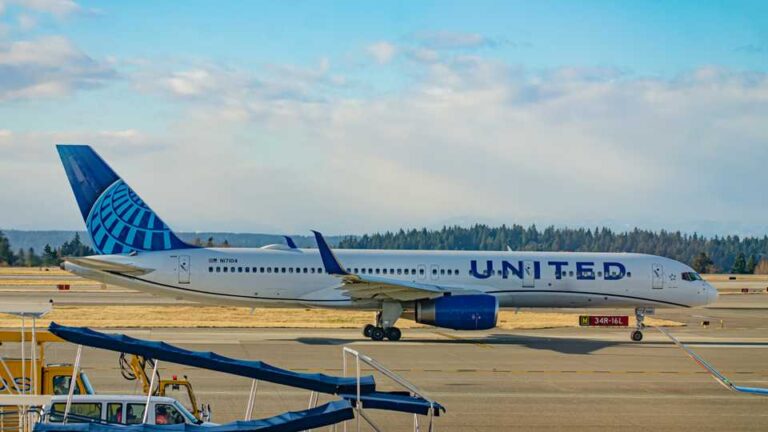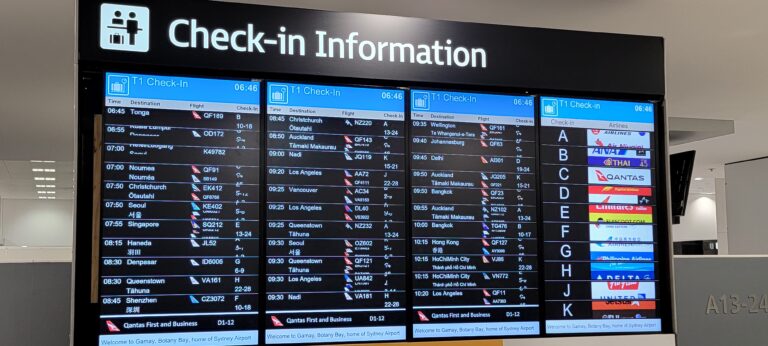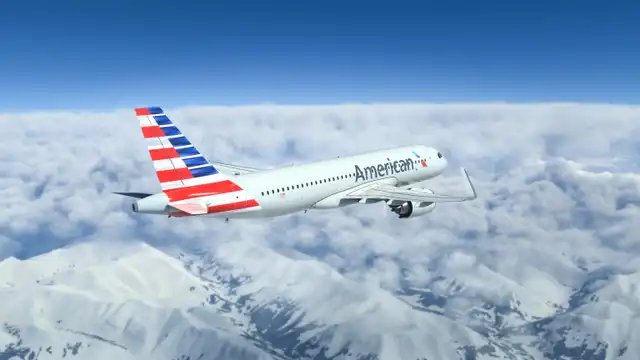United Airlines & JetBlue Transatlantic Flights Forced To Divert To Boston To Refuel
On July 20, 2024, two airlines flying to New York from Europe planned to divert to Boston Logan International Airport (BOS) for refueling. However, only one flight actually diverted to BOS.
Flight tracking service Air Live reported the diversions.
JetBlue Flight 1408
JetBlue Airways flight 1408 flies nonstop from Paris Charles de Gaulle International Airport (CDG) to John F. Kennedy International Airport (JFK) using an Airbus A321neo. According to ch-aviation, the aircraft is registered N2151J and is only one year old.The aircraft departed from CDG at 08:55 local time for a routine flight to JFK, which usually takes eight to nine hours. However, the airline announced that the flight would be diverted to BOS without providing passengers with a reason. Simple Flying has reached out to JetBlue for a comment.
According to FlightAware, the plane arrived at BOS at 13:22 EDT, two hours later than it would usually arrive at JFK, and then proceeded to refuel.
There is a discrepancy, as FlightAware notes that the flight from BOS to JFK took off at 12:24 EDT and landed at 13:07 EDT before the original flight landed. However, Air Live confirmed that JB1408 landed at BOS for refueling.
The airline has not provided a statement or reason why the aircraft did not carry enough fuel to reach its destination. However, the two-hour en-route delay could have resulted in the flight being rerouted due to weather or ATC considerations.
United Airlines Flight 69
United Airlines flight 69 was in a similar situation. It operates nonstop from Stockholm Arlanda Airport (ARN) to Newark Liberty International Airport (EWR), using a Boeing 757-200. The aircraft is registered N33132, a 26-year-old aircraft with over 90,000 flight hours.The aircraft departed from ARN at 09:32 local time for a flight that usually takes around eight and a half hours. Halfway through the flight, however, it was meant to divert to BOS. United stated that the aircraft needed additional fuel due to a weight and balance restriction.
The fueling diversion to BOS would’ve added another 1 hour and 25 minutes to the total travel time. However, the aircraft didn’t end up diverting or needing extra fuel. The flight canceled the diversion and continued to EWR as planned, landing at 12:04 EDT, within the on-time window.
It is unclear why the diversion was abandoned and how the aircraft overcame the weight and balance restriction to fly to EWR while maintaining regulatory fuel reserves successfully. Simple Flying has contacted United Airlines for a statement about the flight.
Two coincidences?
The two aircraft were on similar routes, traveling from Europe to the state of New York at roughly the same time. They had to divert for refueling, but only the JetBlue flight diverted and refueled. It is unclear why both airlines thought they didn’t have enough fuel to reach their destination.
On July 20, 2024, an unusual situation unfolded in the skies over the Atlantic as two transatlantic flights from Europe to New York faced the possibility of diverting to Boston Logan International Airport (BOS) for refueling. This peculiar event caught the attention of many, especially given that only one of the two flights ultimately diverted to BOS. This incident highlights the complexities and challenges airlines face in managing long-haul flights, including fuel calculations, weight and balance considerations, and unexpected in-flight conditions.
JetBlue Flight 1408
JetBlue Airways flight 1408, operated by an Airbus A321neo registered as N2151J, was on a routine nonstop journey from Paris Charles de Gaulle International Airport (CDG) to John F. Kennedy International Airport (JFK). The aircraft, a relatively new addition to JetBlue’s fleet at just one year old, departed CDG at 08:55 local time. Typically, this transatlantic flight takes about eight to nine hours. However, on this particular day, passengers received an unexpected announcement: the flight would divert to Boston for refueling.
According to FlightAware, the diversion led to an arrival at BOS at 13:22 EDT, two hours later than the flight’s usual arrival time at JFK. The aircraft then proceeded to refuel at Boston Logan. Interestingly, FlightAware records show that the flight from BOS to JFK took off at 12:24 EDT and landed at 13:07 EDT, a sequence that appears to conflict with the reported timings. Nevertheless, Air Live confirmed that JetBlue flight 1408 did indeed land at BOS for refueling purposes.
The decision to divert a flight for refueling is not taken lightly and typically stems from several factors, including unexpected delays, weather conditions, or air traffic control (ATC) restrictions. In this case, JetBlue did not immediately provide a specific reason for the fuel shortfall. However, speculation suggests that a combination of in-flight delays and possibly adverse weather conditions might have contributed to the need for additional fuel. Given the two-hour en-route delay, the airline may have chosen the safer option to ensure the aircraft had sufficient fuel reserves to complete the journey safely.
United Airlines Flight 69
In a parallel situation, United Airlines flight 69, operated by a Boeing 757-200 registered as N33132, faced a similar potential diversion. This aircraft, with an extensive service history of 26 years and over 90,000 flight hours, was on a nonstop route from Stockholm Arlanda Airport (ARN) to Newark Liberty International Airport (EWR). The flight, which typically takes around eight and a half hours, departed ARN at 09:32 local time. Midway through the flight, it was announced that the aircraft would divert to BOS for additional fuel due to a weight and balance restriction.
The anticipated diversion to BOS would have added approximately 1 hour and 25 minutes to the flight’s total duration. However, unlike JetBlue flight 1408, United Airlines flight 69 did not follow through with the diversion. Instead, the aircraft continued on its original route and landed at EWR at 12:04 EDT, within the expected on-time window.
The abandonment of the diversion raises several questions. It remains unclear how the aircraft managed to overcome the initial weight and balance issue and proceed to Newark without the need for additional fuel. The ability to resolve such issues mid-flight likely involved careful recalculations and reassessments by the flight crew, taking into account real-time fuel consumption, weather conditions, and other operational factors. Simple Flying has reached out to United Airlines for a comment to shed light on the specifics of this decision-making process.
Analysis and Implications
The coinciding near-diversions of these two transatlantic flights underscore the intricacies involved in flight planning and execution. Both flights, departing from different European cities and operated by different airlines, found themselves contemplating a refueling stop at Boston Logan International Airport. This situation highlights several important aspects of aviation operations:
- Fuel Management: Accurate fuel management is critical for the safe operation of any flight. Airlines must consider various factors, including the aircraft’s weight, weather conditions, potential delays, and fuel burn rates. Any deviation from the planned flight path or unexpected in-flight conditions can necessitate adjustments, such as unscheduled refueling stops.
-
Weather and ATC Delays: Weather conditions and air traffic control restrictions can significantly impact flight operations. Adverse weather can lead to increased fuel consumption due to longer routes or holding patterns. Similarly, ATC delays can result in additional flying time and fuel usage, potentially necessitating diversions.
-
Weight and Balance Considerations: Ensuring proper weight and balance is crucial for the safe operation of an aircraft. In-flight adjustments to weight distribution can affect fuel consumption and flight performance, requiring careful monitoring and potential recalibrations.
-
Operational Decisions: The decision to divert a flight for refueling or continue as planned involves complex considerations. Pilots and flight operations teams must weigh the risks and benefits, taking into account fuel reserves, passenger safety, and overall flight efficiency.
The divergence in outcomes for JetBlue flight 1408 and United Airlines flight 69 also illustrates the variability in operational responses to similar challenges. While JetBlue opted for the conservative approach of refueling at BOS, United managed to resolve its issues without the need for a diversion. These differing approaches underscore the flexibility and adaptability required in airline operations.
The events of July 20, 2024, involving JetBlue flight 1408 and United Airlines flight 69, serve as a reminder of the complexities inherent in aviation. The potential diversions for refueling reflect the dynamic nature of flight operations, where real-time conditions and unexpected challenges necessitate swift and informed decision-making. As airlines continue to navigate these complexities, ensuring the safety and comfort of passengers remains paramount. The aviation industry can learn from such incidents to enhance operational strategies and improve the overall efficiency and reliability of air travel.






